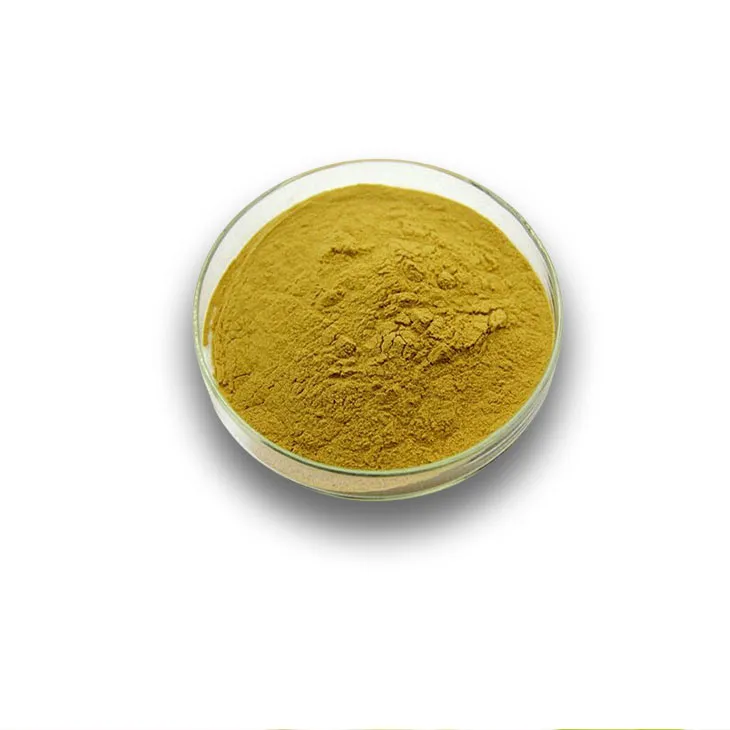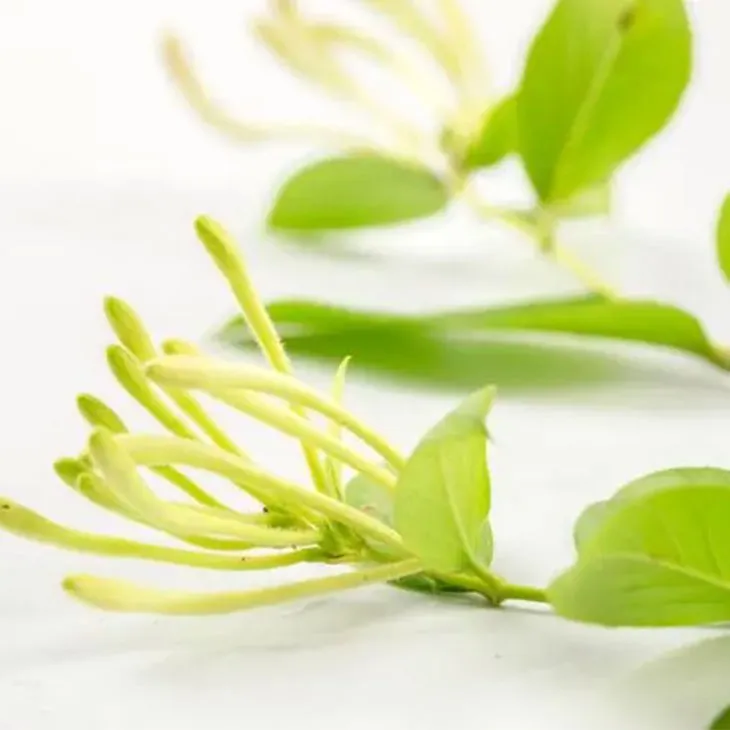- 0086-571-85302990
- sales@greenskybio.com
Honeysuckle pollen can reduce high blood pressure.
2024-11-11

1. Introduction
High blood pressure, also known as hypertension, is a widespread health issue globally. It is a major risk factor for various serious diseases, including heart disease, stroke, and kidney problems. Honeysuckle Pollen, on the other hand, has been suggested to possess properties that can potentially reduce high blood pressure. This has attracted the attention of researchers and health - conscious individuals alike.

2. Honeysuckle Pollen: A Rich Source of Bioactive Substances
Honeysuckle Pollen is rich in bioactive substances. These substances play crucial roles in the potential blood - pressure - lowering effect. Some of the key bioactive components include:
- Flavonoids: Flavonoids are known for their antioxidant properties. In the context of blood pressure regulation, they may help in reducing oxidative stress in the blood vessels, which is often associated with hypertension.
- Polyphenols: These compounds can interact with various physiological processes in the body. They may have a role in modulating the function of blood vessels, perhaps by influencing the release of certain vasoactive substances.
- Amino acids: Certain amino acids present in honeysuckle pollen might be involved in the regulation of blood pressure. For example, they could be precursors for the synthesis of hormones or neurotransmitters that are related to blood pressure control.

3. How Honeysuckle Pollen May Affect the Cardiovascular System
3.1 Decreasing Peripheral Vascular Resistance
One of the ways in which honeysuckle pollen may reduce high blood pressure is by decreasing peripheral vascular resistance. The bioactive substances in the pollen may act on the smooth muscle cells in the walls of the peripheral blood vessels. By causing relaxation of these smooth muscle cells, the diameter of the blood vessels can increase. This, in turn, reduces the resistance that the blood encounters as it flows through the vessels. As a result, the heart does not need to pump as forcefully to maintain blood circulation, and blood pressure can be lowered.
3.2 Improving Endothelial Function
The endothelium, which is the inner lining of blood vessels, plays a vital role in maintaining normal blood pressure. In hypertension, endothelial function is often impaired. Honeysuckle pollen may help in improving endothelial function through several mechanisms. For instance, the bioactive substances in the pollen may stimulate the production of nitric oxide (NO) in the endothelial cells. Nitric oxide is a vasodilator, which means it can relax blood vessels. By enhancing NO production, the pollen can contribute to the dilation of blood vessels and a subsequent reduction in blood pressure.

4. Current Research on Honeysuckle Pollen and Hypertension
Although there is evidence suggesting that honeysuckle pollen can be beneficial in reducing high blood pressure, research in this area is still in progress. Scientists are conducting various studies to:
- Identify the specific bioactive compounds in honeysuckle pollen that are responsible for the blood - pressure - lowering effect. This involves detailed chemical analysis of the pollen and isolation of potential active substances.
- Understand the exact mechanisms by which these compounds interact with the cardiovascular system. This requires in - vitro (test - tube) and in - vivo (animal and human) experiments to study the physiological and biochemical changes.
- Determine the optimal dosage and duration of treatment with honeysuckle pollen for hypertension. Different dosages may have different effects, and finding the right balance is crucial for its potential use as a complementary treatment.

5. Honeysuckle Pollen as a Complementary Treatment for Hypertensive Patients
For hypertensive patients, traditional medical treatments such as antihypertensive drugs are the mainstay of management. However, there is growing interest in complementary and alternative therapies. Honeysuckle pollen has the potential to be such a complementary treatment. But it is important to note that:
- Patients should not stop their existing antihypertensive medications without consulting their doctors. Complementary treatments like honeysuckle pollen should be used in addition to, not instead of, standard medical care.
- Quality control is essential when it comes to using honeysuckle pollen. There should be proper sourcing and standardization to ensure that the pollen contains the expected bioactive substances in appropriate amounts.
- Individual responses to honeysuckle pollen may vary. Some patients may experience significant blood - pressure - lowering effects, while others may not show the same degree of response. Monitoring of blood pressure is necessary during any trial of complementary treatment.
6. Conclusion
In conclusion, honeysuckle pollen shows promise as a natural substance that may be able to reduce high blood pressure. Its rich content of bioactive substances and potential effects on the cardiovascular system, such as decreasing peripheral vascular resistance and improving endothelial function, are areas of great interest. However, more research is needed to fully understand its mechanisms of action, determine the optimal dosage, and ensure its safety and effectiveness as a complementary treatment for hypertensive patients. As our understanding of natural remedies and their interactions with the body continues to grow, honeysuckle pollen may emerge as a valuable addition to the arsenal of treatments for high blood pressure.
FAQ:
Q1: How does honeysuckle pollen reduce high blood pressure?
It is rich in bioactive substances. These substances may decrease peripheral vascular resistance and improve endothelial function, thus reducing high blood pressure.
Q2: Is honeysuckle pollen a substitute for traditional hypertension medications?
At present, it cannot be a substitute. Although it may have the effect of reducing high blood pressure, more research is needed. It may be used as a complementary treatment in the future.
Q3: Are there any side effects of using honeysuckle pollen to reduce high blood pressure?
Currently, the research on its side effects in reducing high blood pressure is not comprehensive enough. But for some people, pollen may cause allergic reactions, so caution should be used.
Q4: How much honeysuckle pollen should be taken to effectively reduce high blood pressure?
There is no established standard dosage yet. Since research is still ongoing, it is not possible to accurately determine the appropriate amount for effectively reducing high blood pressure.
Q5: Can everyone use honeysuckle pollen to reduce high blood pressure?
No. People with pollen allergies should not use it. And for those with other health conditions or taking other medications, they should consult a doctor before using.
Related literature
- The Bioactive Components in Honeysuckle and Their Potential Health Benefits"
- "Study on the Relationship between Pollen Bioactive Substances and Cardiovascular Health"
- "Research Progress on the Complementary Treatment of Hypertension with Natural Products"
- ▶ Hesperidin
- ▶ citrus bioflavonoids
- ▶ plant extract
- ▶ lycopene
- ▶ Diosmin
- ▶ Grape seed extract
- ▶ Sea buckthorn Juice Powder
- ▶ Beetroot powder
- ▶ Hops Extract
- ▶ Artichoke Extract
- ▶ Reishi mushroom extract
- ▶ Astaxanthin
- ▶ Green Tea Extract
- ▶ Curcumin Extract
- ▶ Horse Chestnut Extract
- ▶ Other Problems
- ▶ Boswellia Serrata Extract
- ▶ Resveratrol Extract
- ▶ Marigold Extract
- ▶ Grape Leaf Extract
- ▶ blog3
- ▶ blog4
- ▶ blog5
-
Organic Tongkat Ali extract powder factory.
2024-11-11
-
How to make powder with ashwagandha extract.
2024-11-11
-
Rosehip extract manufacturers from China.
2024-11-11
-
The best cat's claw extract in nature.
2024-11-11
-
Chinese Dandelion Leaf Extract Suppliers.
2024-11-11
-
Lemon Balm Extract
2024-11-11
-
Citrus Aurantium Extract
2024-11-11
-
Propolis Extract Powder
2024-11-11
-
Maitake Mushroom Extract
2024-11-11
-
Medicinal Marshmallow Extract
2024-11-11
-
Troxerutin
2024-11-11
-
Thunder God Vine Extract
2024-11-11
-
Tamarind extract powder
2024-11-11
-
Saffron Extract Powder
2024-11-11
-
Boswellia Serrata Extract
2024-11-11





















